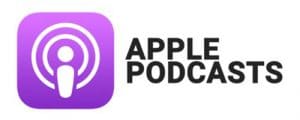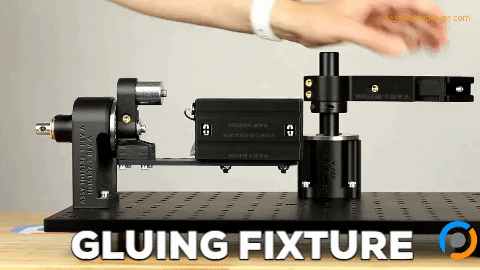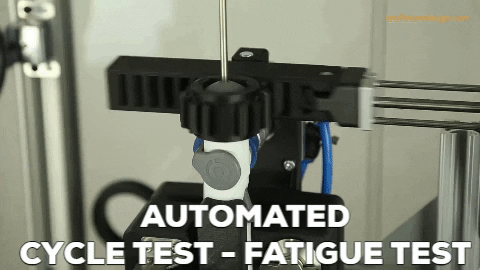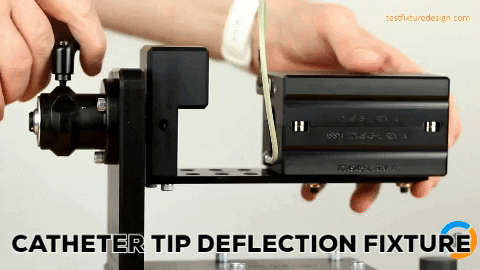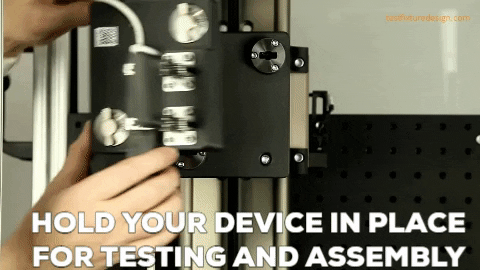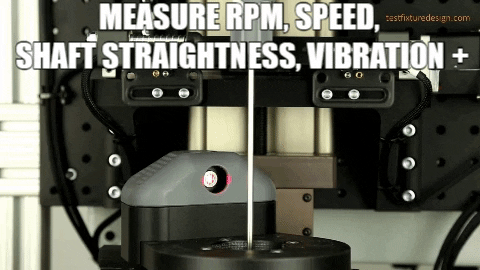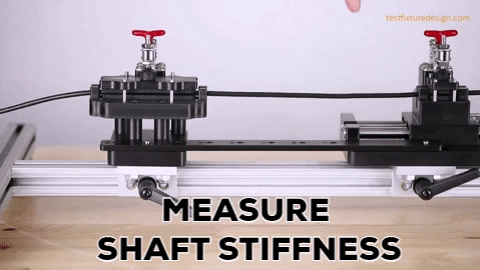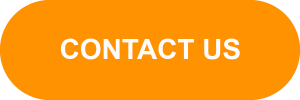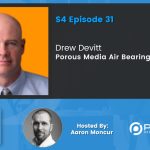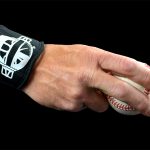S4E30 Dhruv Bhate | Engineering In India, Biomimicry, & Using White Papers
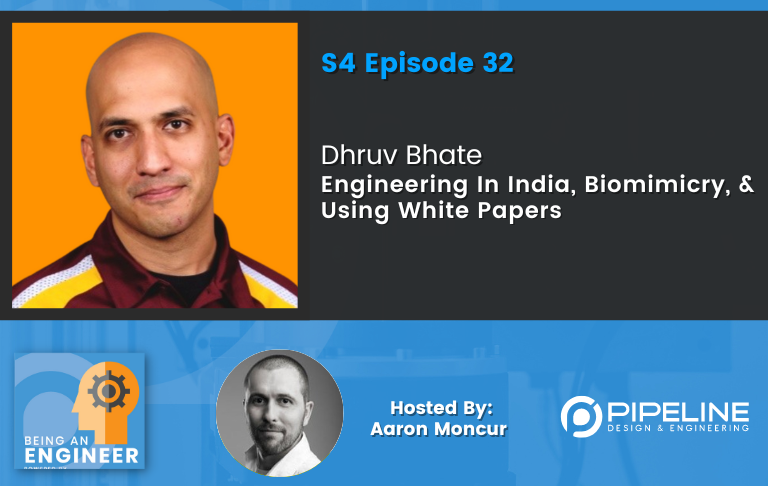
Who is Dhruv Bhate?
Dhruv Bhate holds bachelor’s and master’s degrees as well as a PhD in mechanical engineering and is currently the program chair at Arizona State University for their manufacturing engineering program. Dhruv has extensive experience in additive manufacturing, as well as in bio-inspired design
https://asknature.org/
https://elicit.org/
https://www.deepdyve.com/
Aaron Moncur, host
EXPAND TO VIEW EPISODE TRANSCRIPTION
SUMMARY KEYWORDS
engineers, engineering, biomimicry, work, design, papers, writing, research, question, people, academia, ideas, students, talk, nature, industry, materials, lesson, india, honeycomb
SPEAKERS
Presenter, Dhruv Bhate, Aaron Moncur
Presenter 00:00
Hi, everyone, we’ve set up this being an engineer podcast as an industry knowledge repository, if you will, we hope it’ll be a tool where engineers can learn about and connect with other companies, technologies, people, resources and opportunities. So make some connections and enjoy the show.
Dhruv Bhate 00:18
It is so true that if students and faculty if we are not curious of it does it just sets us up to do work that does not excite us if it doesn’t excite us, it’s not going to excite anyone else.
Aaron Moncur 00:45
Hello, and welcome to another wonderful episode of The being an engineer Podcast. Today we’re speaking with Dhruv Bhate, Dhruv holds bachelor’s and master’s degrees as well as a PhD in mechanical engineering, and is currently the Program Chair at Arizona State University for their manufacturing engineering program, through has extensive experience in additive manufacturing, as well as in bio inspired design, both of which we will talk about today. Dhruv, thank you so much for being on the show today.
Dhruv Bhate 01:16
Oh, thank you for having me. All right. So
Aaron Moncur 01:18
What made you decide to become an engineer,
Dhruv Bhate 01:22
I think the the immediate sigh come from India. And that’s where I went, got most of my schooling, a town called Pune. It called Maharashtra. And while I was there, you’re typically as a child, when you’re being raised, you have one of two options, medicine or engineering. And I sort of fell into that narrative that I would become an engineer by the process of elimination. However, the immediate spark for me was a Formula One, you know, it was the mid 90s. Formula One was in the news, we finally got to watch it on cable television. And I was just amazed that this was a sport unlike any other where the engineering was arguably more important than the human performance. And I was like, that’s what I want to do. You know, I want to be a Formula One mechanic or be part of a team that builds and races guards now, I guess we talk about this as we go along. But that’s not what happened with me. But that was the part that led me to say, I’m going to do engineering. And I’m going to do mechanical engineering, because I want to fit it in racecars better, and it’s gonna
Aaron Moncur 02:37
Nice, nice, I love that. Who doesn’t love a good formula one brace, right, getting embedded back of the fast car. I don’t know a lot about India. And I thought it was really interesting that you mentioned there was kind of one of one of two options that that you had to choose from medicine or engineering. Tell me a little bit more about that. How does How did that become kind of like the de facto two options for folks grown up in India.
Dhruv Bhate 03:07
It’s a complicated issue. And I can’t pretend to understand all of it. It’s culture. You know, a lot of it is culture. But a lot of it is also associated with our you know, there are other paths, of course, there is commerce, there is the arts, etc. But the general assumption was that if you were doing well in mathematics and science in school, that those were the two options that were most appropriate for you. So you know, my brother did engineering, everybody around me, that was a really good at in their academic programs did engineering or medicine. I think ultimately, it’s tied to the earning potential that those jobs had, we’re talking about India, the 90s, which was a very different country than it is today, it was much more closed off to the world. And in the end, you know, the level on thinking about making a job making a career out of being a digital piano YouTuber, and all which, which is happening a lot in India these days, those were just not even in our conception at the time. So if you wanted to make money if you wanted to live a good quality lives, those were your two paths forward, and a lot of parents and doing mine at an eye towards potential immigration for us to another country, typically, who has but also England, Australia, it was well known that to maximize your odds of migration, you want to work in a STEM relevant field. Those are the ones that you had the highest odds of, you know, getting a chance to go abroad, and potentially, you know, if you so chose build a life there, so it was a bit of both or all three of these. Lastly, there’s a lot of prestige associated with, you know, being an engineer or or a doctor? The perception at the end of the night? Was that that those are the highest value provide professionals. So that was woven in there, too. So more is more psychoanalysis that you
Aaron Moncur 05:16
asked for? No, that’s super interesting. No, yeah, I find that really interesting. How about law? Is law a prestigious path there? Or is it just not? Not many people do become lawyers, attorneys.
Dhruv Bhate 05:30
In the 90s, I would say it was not, you know, because so much of our education was based on science and mathematics, if you did well, in those subjects, you know, unlike in the US, you actually make a choice in the middle of your high school in India after 10th grade, you, you can actually start dropping subjects that are not interested in pursuing more. So I dropped biology, for example, and people can drop mathematics to if they don’t want to pursue it beyond 10th grade, and they don’t learn calculus now. So for me, in those times, I guess law was always a couple of rounds lower, and it didn’t help that I was not interested by it. And B didn’t have a culture of television programs with lawyers and attorneys and is or law in order to not have that in the popular psyche. So if you did not get to be a doctor or an engineer, then you typically went into these other professions, things have changed a lot. My friend told me that one of the most prestigious colleges in India, the the students, the last student that got into the arts program, actually had scored higher than the last student that got into the engineering program are so much harder to go study arts now than it is early on getting interesting. This is, you know, 30 years ago, things were very.
Aaron Moncur 07:02
Yeah, it’s super interesting to hear that engineering and medicine are like the two really prestigious paths, right? Because Because here, it’s kind of like law and medicine are the two most prestigious, I guess, professions, right? And engineering, like, no one’s gonna look down on an engineering degree, for sure. But it’s not like at the same level in the US. So it I don’t know, it’s just interesting how different cultures have different ways of looking at it. So all right, well, let’s get into the engineering stuff. Now. You You did quite a bit of additive manufacturing towards the beginning of your career, what how did you get into that? And did it have anything to do with Formula One race cars,
Dhruv Bhate 07:49
it did not actually, I, I stumbled onto 3d printing and additive manufacturing. When I was working at Intel, I somebody at Intel, there I was, I was working at Intel in a micro electronics packaging, assembly floor. And I was I was I had several different machine tools and operations that I was in charge of at different times. And during that time, you know, there was one piece of equipment which I would pick and place it in, I would pick up little chips and transfer them from one train to another trade. And that had had to be ESD safe. And it was proving very difficult to get that head from the supplier. So that’s what I learned that we got some new heads and that they were 3d printed. This is around 20 You know, 13 or so about 10 years ago. And that got me intrigued where they came from. And I went down and I looked at it, it was a Stratasys FDM in and they were there was a there was a completely different group of people. They were a support organization, the manufacturing floor started with, you know, fabricating tooling for us. So I got to know them. That was my first intro to additive manufacturing. But then I happen to visit a i There’s an organization called IEEE, Utah’s electronics engineer, and they host a monthly seminar in Phoenix, different chapters all over the country. I attended the Phoenix chapter, or a talk on additive manufacturing of that our 2014 or so, and it was by this guy at a company called PDD. And, you know, I walked up to him after the talk and a I just fell in love with the your prototypes and their complexity and the color that he had brought with him. You know, and I walked up to that table. And I said, my sabbatical is coming up, gives you a sabbatical every seven years. And those days, it could take two months off. And I come and spend those two months at Ph. D. And intern, they’re free internship. And I just want to learn, you know, and put me out here to dues I want to throw on all the machines that I can get my hands on. So it began accidentally, and then I attended the seminar because I was intrigued. And I think the third one that topped it off was Netflix had a documentary around that time called print the legend, which talked about, you know, the making of MakerBot in our labs, and how these two startups are, you know, had to take it from the big guy Stratasys 3d systems at that time. And, and the three things together just convinced me that if there was an opportunity for me to get into the field, I wanted to embrace you know, one thing throughout my canoeing education. And my time at Intel, I was doing, I was being a good engineer, you know, and I was, I was solving problems. I was doing things that needed doing. But I never felt like I was in love with an idea or a topic or theme or subject. But additive manufacturing, some reason when I saw the structures, I just literally, you know, the first time I have felt truly in love with something, maybe since my Fabiola, what sort of rituals are more childlike procedures for engineering. But now I finally said, Wow, I, here’s the technology that you can really maximize for is nine but and so yeah, and by that I was an engineer. So I kind of had a more nuanced understanding of manufacturing, design, process development, and additive was this huge burgeoning field with so much potential that I started, I just had to get into it. So I actually did that internship at BDD, I went back to Intel, you know, I worked on another month, but I essentially resigned, and I add full time. Because that’s how tired I was about knowledge. And I’m very glad I did that. It was the first move that I made in my career that was tied to, you know, a technology opposed to a company.
Aaron Moncur 12:44
That’s a great story. Thank you for sharing that. Yeah, I know the guys that PDT. They’re wonderful people there and very good at 3d printing for sure.
Dhruv Bhate 12:54
Yes, yes.
Aaron Moncur 12:57
What? What are a couple of ways that engineers should be using 3d printing that that maybe they aren’t even aware of right now?
Dhruv Bhate 13:07
You know, because I’m now in a research world, I tend to think of these questions more from an academic perspective. So let me give you a bat standpoint, which often means that the one I’m about to say is not ready for primetime, you know, all it is it is. So my first and most interesting use case of additive, which I think is is already appreciated by many, but may not be as prevalent in the industry. Yet, commercial application is sort of the marriage between these are so called meta materials are architected materials and bio inspired design. I think people do them separately. But to me, the place where they come together is when you put these two ideas together, that’s when much more innovation than when we tackle them independently available, you know. And so my that is my first area, if you can look at natural structure that is our other words is discretized into smaller structures, like cells, like in a honeycomb. But more than just that, you know, people have 3d printed armor likes ales, people have 3d printed air like structures to trap moisture, those kinds of applications, where you look at additive as what its potential discrete repeating structural elements, and then look at how nature is using those elements, how they’re designed for what particular functions. That’s one untapped opportunity, I see may be more academic right now, but I think there are opportunities as well for it. The second one that I think we’re all struggling with, you know, me included is barely making multi material additive to its potential. I don’t think it’s found a killer application yet. I don’t think it’s called a lot of problems about the process itself. What happens at the Fade? You know, this could be functionally graded materials, like how we transition from one alloy to another. That is another area that I think of the academic side. Are there lots of opportunities, and we’re not probably doing as much as we ought to be doing. Yeah, though, that’s my quick answer to those two.
Aaron Moncur 15:37
Okay, so you’re in academia. Now, you’ve kind of transition, Trent transitioned from industry to a career in education? What, what were some of the lessons that you learned when you made that transition?
Dhruv Bhate 15:54
There were quite a few, I think the biggest these lessons stem from challenges. So there are many positives to coming from industry and going into academia. You know, you bring a lot of experiences, in particular with project management with execution, that I don’t think of most academics as, though that is there lots of advantages, but the biggest challenge, and the lesson associated with that challenge was that, you know, any academic career at the crux of it, when done right, is really about identifying research questions, about identity about applying the scientific method to work as opposed to thinking of your work as a project. You know, I was studying, I teach a class here this summer, I’m teaching it for the first time. It’s called Principles of independent research. And one of the discussions that I’m trying to get the students into is what is the difference between a project and research? No, because there are some differences. And I think when I came from industry, I was still thinking that too much of a project mindset, that you’re trying to achieve a certain outcome in a certain amount of time. And you have to break it up into objectives and tasks and execute that. And that’s great, you get your job done, the sponsor who gave you the money is very happy. But when you go to write that up a paper, it is very hard to tell a narrative that is really emphasizing emphasizing the generation of new knowledge, you know, so that’s been my, my one big lesson, my first lesson is that your research is different from the execution of projects that many engineers do so well. It, it cannot be often broken up into, you know, our time specific deliverables and tasks. It it depends on the definition of a well posed research question. And the development of well posed hypotheses. So that was Lesson number one, lesson number two was just, you know, you need patience and time to build up an academic community. You’ve spent a lot of time in one company, and the, or do companies, and most of your contacts in an organization in an industrial organization, are your peers, your management, and your customers and occasional other stakeholders here, you know, your your community is the people that are doing similar work to you. And they could be in another continent, you know, they could be across the hallway. And that building, that community of peers, who you’re going to learn from, who are going to at different stages of your career, assess your performance is a second lesson that I did not, you know, take seriously initially, this means going to conferences, giving invited talks, inviting other people to your, you know, Dr. University to give a talk, these are not things that we do in industry at all, we just are very focused on solving problems, developing ideas, we’re not really thinking about building a community, often for some intangible gain down the road. So those are just two of many lessons that I’ve learned that I maybe took me four or five years to truly grasp. You know, and truly appreciate that, you know, and not try to pass down the lessons, students that well, in you know, I like to tell my students that there are three species of research and I don’t know if I’ve come up with this or five, pick this up from someone else, but and these these are often not as critical in in an industrial environment. They are but I don’t think they are as important that are some other things. And those are curiosity, right? I mean, we we really value that And he, and it sounds like I’m paying lip service to a cliche, but it is so true that is total silence faculty, if we are not curious of it does, it just sets us up to do work that does not excite us. If it doesn’t excite us, it’s not going to excite anyone else. And then the second, the second C is creativity, you have to take that curiosity, it’s sort of the fuel, the creativity is the engine that can watch that steel into a motive power that can do things. And then the last C is connection, you know, you need to be connected, be it on the internet, be it at conferences, be it through journals, and we ultimately rely on so many connections to people, organizations, entities that allow us to take back, fuel that engine and actually build a car, so we can get somewhere. So those are those are some of my that’s a little philosophy lesson that I’ve learned. And they took me some time, I think the biggest thing is, you cannot construct a research, problem, research, task, or agenda, never the same way you craft a project that they can learn. Yeah,
Aaron Moncur 21:13
I liked your three C’s a lot. In fact, we hear on the podcast, I’m always asking people what what do the best engineers have in common and curiosity and creativity? Those things come up a lot. And I might add a fourth C communication. That one is like, all the time everyone is talking about? Oh, yeah, you need to be a good communicator, which I think us who have been in the industry for a while kind of get but maybe newer students or new graduates don’t fully appreciate the importance of being able to communicate with other people. Well, let me take that real short break here and share with the listeners that Team pipeline.us is where you can learn more about how we help medical device and other product engineering or manufacturing teams develop turnkey equipment, custom fixtures and automated machines to characterize inspect, assemble, manufacture and perform verification testing on your devices. You know, I read that that little promo ad every time I do a podcast and I wonder how many people just hit the Skip 30 seconds Ford button. Whenever I read that they’re like they’re just waiting for it. Team pipeline.us is where Okay, 30 seconds, skip ahead. Alright, now we’re back into the good stuff here. I should come up with something really different, you know, like something that’s like, four seconds, you know, so if they skip ahead, 30 seconds, they’re gonna miss 26 seconds of really good stuff. Alright, that’s, that’s my new goal. I need to come up with a four second promo ad here. All right, back into the questions here. biomimicry. That’s something that that you work a lot in what is biomimicry and how can it help engineers who are developing new products as opposed to only research in academia?
Dhruv Bhate 22:59
So I think the the many definitions of biomimicry, the one I liked was the one that’s often right by the mother of biomimicry, and Benyus who wrote a book in the 90s. He says, She essentially calls it any type of innovation that is inspired by nature’s genius. Right. So that’s sort of a very broad description of the subject. The biomimicry generally can involve what what aspect of nature’s genius are you inspired by, generally speaking, it could be either something to do with the shape and the form of nature. So like the shape of a bird speak, that was what we’ve been called Bio inspired design. And that’s the specific aspect of biomimicry that I work on people that are also trying to synthesize materials, you know, at a technical level that are inspired by natural materials. People also try to develop systems, drones communicating with each other, the way ants communicate, for example. So typically, it’s farms materials, people also working on processes in the manufacturing processes like self assembly that mimic biological processes. But what I really focus on is violence via design. And there the idea is to ask the question, on one level, why is neater? Why does nature have the eight see dots? You know, why are trees CIP? The way they are? Understood? Just, and the beauty of asking those kinds of questions is there’s an infinite number of them in, you never run out. But what does it mean from an engineering standpoint? Is that a lot if you sort of break down how we all learned, design and the interaction of design with, you know, mechanics, on the one hand, or let’s say behavior, the environment stresses, you know, fatigue, we got to design and meet those requirements. And you also got to design to be bad at Factory, right. So in some sense nature is doing the same thing nature has a certain list of materials available, there is a developmental process that leads to a certain design. And that design, you know, has to withstand a test in that environment and ecology. And if it’s a good design, it’s going to get selected and improved on through through the processes of natural selection. So good. The parallel is, is great. So lots on the academic side, what what what does it mean, for a practicing engineer? I think I think this is one of those untapped eight minute mines of ideation. In fact, it is just mind boggling to me, if you take the honeycomb. Yeah, and you look at the number of products, you do a pattern search for Honeycomb. Yeah, that one idea that if I want to minimize material and still divide area into equal cells of the same area, the most efficient way to do it is with the hexagonal angle. That’d probably be hundreds of patents that are exploiting honeycomb shapes for different things, you know, from sandwich panels, to filters to sound absorbers, you know, I’m sure, that’s just one organisms, one creation, right. So that we, we recently submitted, and it’s a patent pending idea on taking lattices that were inspired by a C span, that has the sea sponge that lives in the ocean, and instructs an exoskeleton using silica that pulls from the water. And when you look at that sea sponge, it looks like a lattice grid. But when you look at it under a CT scanner, and look it up real close, it’s actually a mix of some lattice beams that are connected, they’re welded together, and others that are evolving, that are going up and down. So we said, why is it doing that? Why? Why is it not moving everywhere, or not connected everywhere, and will not be gotten we studied that we found it really helps with structural compliance, you can make very squishy lattices, more better than anything that has been reported in the literature. But we published a paper we submitted a patent that is, is now being filed, and begun bending a lot on this one simple idea that we borrowed from natural lumps away. So I think, you know, there’s this amazing book that a guy named Steven Johnson wrote is called Where do good ideas come from? Or where good ideas come from, and there are different, you know, they’re like seven or eight different sources that one gets good ideas from, you know, and nature is one of them in there, that category. And I think that is the ultimate innovation. So let’s say you’re trying to solve a particular problem. And the biomimicry methodology of you know, that oak stitch goes into this, you you have a particular problem that you’re trying to solve, maybe you’re trying to make, you know, a lightweight structure that can dissipate heat, you know, because you’ve been asked to create a lightweight heat exchange, you immediately go to nature, and you say, you know, where are thermal management problems and need power? What are some of the exemplars of who stole thermal management problems, why managing lightweight prop or keeping the weight of the entire structure light, and you find so many different examples, the beak of a Dukane, for example, is one example where, you know, the beak is highly is constructed of open cell foam, and regulates the temperature of the entire Dukane organism. And there’s a beautiful website called Ask nature dot o RG. I’m not I’m not affiliated with it or anything, but it’s, I use that a lot to go in and say, you know, give me examples of this. Of course, these days with AI generated, the way I do is we have other ways to search as well, but asked me to does a very good job of synthesizing of biological exemplars for specific functions that you might be interested. And that might lead you down a different design idea that you would not have gotten to, without that talks. That’s how I think you can generate ideas. I do think that there is a big jump from saying it works like that in nature. And I’ve been able to extract it and show it as an isolated idea, maybe in a lab setting or on a computer simulation, to integrating that into the product where there might be additional requirements that the natural structure does not have to deal with. So I’m not saying like, I’m not saying I’m guessing that biomimicry solves all your problems, but it gives you an opportunity to create individual ideas. And then your next step is how do you weave them together a product solution? That is much other. We don’t really work on that as much. We tend to evaluate individual ideas, try and generalize them up to a point, and then put our work out there.
Aaron Moncur 30:22
Yeah, I’ve never heard of this asked nature.org. That sounds really interesting. I’m going to take a look at that. And I’ll put that in the show notes as well for all of the rest of you who would like to check it out, too. In addition to ask nature.org, where else can engineers go to get a sense for what research has already been done in regards to biomimicry and just getting ideas for how they might incorporate biomimicry into their designs? I know you and your colleagues have written a lot of papers on this right. So there’s literature out there. I think most companies don’t have subscriptions to white papers, which makes it kind of hard to access. I mean, you could probably go to the library, I think, where the typically, community libraries do have subscriptions. But like, realistically, how many engineers are going to go to their public lab library? Even though it’s not that hard? Probably not that many. So is there is there a good way to find this literature? And is it more than just white papers? How else can engineers find ideas in biomimicry that they can apply to their, their projects?
Dhruv Bhate 31:35
I think, you know, generative AI and chat has become enormous ly useful. And if you had asked me this question two weeks ago, I would not have given you the answer I’m about to give you but there is in an amazing platform that I’ve just discovered called illicit dot o RG E li c di D not illicit adult might not like it, but illicit e li Cid dot o RG. And it is like chat CPT it’s a derivative AI chat bot. But it only references published. So this thing and yeah, and and it it summarizes the top four papers from a relevant standpoint. So it gives you an abstract summary for the question you ask. And it lists a bunch of papers, you can even check and say only show me ones where the PDF is available. But it’ll only show you those where you where it is in the open access domain. Increasingly, papers and journals and things are moving to an open access model. And away from a subscription model. You want a paper that was in the 70s 80s it’s probably still behind the paywall. But otherwise, a lot of recent literature, the last five years in particular is increasingly available open access. And so that is one option. If you do if you are diving deeper, and when I was at PDT, I went to my manager, my one of the principals of the company and I said can I get access to this website called Deep Dive? A EDYV Not the ivy Ve are a deep dive is a subscription service that I don’t know how much it costs at the moment. It was $40 a month back in the day. And it basically has access to not everything out there. But a lot of journals, they have a special subscription service for folks who are not affiliated with university and then go about it. But I think illicit dot o RG not just for Byler me credit for any kind of research. Is this fantastic. And there’s probably going to be competitors and the list coming up pretty soon. One wonders how they are able to source this information and other rights are being asked, and whether they will be around, you know, two, three years from now. But at the moment, that is my hot tip as they say.
Aaron Moncur 34:08
That’s an awesome one. I can’t wait to check that out. I mean, that’s one of the things that frustrates me is sometimes I’ll search for some topic on Google Orion and there’ll be a bunch of of results but they’re all leading to some journal article that I don’t have access to. So I can read like a short abstract, but I can’t really read all the results and the conclusions and things like that. So elicit.org That is super cool. I can’t wait to take a look at that. Great pro tip. Thank you. Let’s see what what what advice do you have for students who might be interested in research careers?
Dhruv Bhate 34:46
I think I think I offered I already addressed you know, like the lessons that I learned coming from an industry environment into an academic environment was really to truly understand what research needs and make sure that’s what you want to do. And to me, the, as engineers, we do not get trained as much in the scientific method. And, and we don’t truly appreciate, you know, the the value of those is, and yes, I probably shouldn’t call it the four C’s now for communication there. But I will say, one of the things that takes my students by surprise is, you know, a lot of times I am actually tell them this, that I get disappointed that they are not curious and enthusiastic about the research as they ought to be. I don’t understand why this is the case. You know, you you have a once in a lifetime opportunity. You’re doing your PhD, for example, to work with an expert, you know, in this domain, have access to university facilities, including papers, genres, or library, equipment materials. If you don’t, if you need a question answered from a different professor, you know, they are down the hallway, you get to go to conferences, you get to do some pretty cool work in and control your learning along the lines that you are interested in. So my first suggestion is don’t pick a topic, be very, be very cognizant of the topic you’re picking, and make sure it’s something that you feel a gut like for, you know, I do a PhD is just another job. I think it’s going to be sub optimal always to be careful with picking a topic. So taking an advisor, aisle one, and I guess, you know, there’s a long list. But one other thing that I think surprises a lot of students is they don’t appreciate how much reading and writing a PhD student has to, you know, I estimated for them that the average PhD publishes about 100,000 words. Yeah. And between their doctoral thesis between, you know, three girl papers, and maybe one or two conference publication that comes to about 100,000 words. And at a BSD, a typical engineering PhD is about four years long. And your first year you barely write anything, traditionally, but you’ve got three years, that’s about 1000 days to write 100,000 words, that’s 100 words a day, you know, that, that’s your final output, leave alone, revision, editing, etc. So that comes talk to them. And then each paper cites at least 30 to 50 other papers that you have to variably read, and that you are citing in your work. And it’s so so now you’ve got something on the order of 3 million words that you got to read during your PhD. Now, which is like 3000 words a week, you’re not? Well, I’m just, I think that last calculation is a bit wrong. But I it basically boils down to one paper a week, at a minimum over four years. So um, you know, if you’re not, if you can’t even imagine this habit, developing a daily habit of reading and writing being part of your makeup for at least three long years, you know, and you don’t have a topic that really excites you, you know, don’t get into it. But if you do, and, and you do love to play with ideas with thoughts, and also get your hands dirty. And engineering PhD is fantastic. Because unlike a lot of other PhDs, there are good job prospects after that, you know, you don’t have to go into academia. In fact, the majority of PhDs do not go into academia, that about 85% of them go into industry. So the outcomes after a PhD are great as well. But you do need to find something you love. And you do need to be aware that you are that at the end of the day, the way we the way, our output is not a device, it’s not a product, it’s new knowledge. And the way we share that deliverable is publication. And you have to make use of that, or it’s going to be a tough throat.
Aaron Moncur 39:16
Yeah, I’ll chime in on the writing part, especially even in industry, it’s really important to have good technical writing skills. And I noticed that a lot of engineers don’t have good technical writing skills, you know, grammars, poor spelling is poor. And just overall sentence structure and kind of the thought or the logic behind the the architecture of the writing is not is not that great. And can you be a good engineer and not have great writing skills? Yes, you can, but it’s going to limit you like it really truly does limit how far you can go. I won’t name any names here. But I can think of a few engineers, I know who there are things that I won’t ask them to do, because that they involve a lot of writing and, and I know that it’s not going to turn out great. And if they could do those things, they would be more valuable to the company to, you know, whoever your employer is. So developing those technical writing skills, it, it might not be the most glamorous thing, but it really is important. And as engineering students and young engineers, you should definitely spend some time developing that skill.
Dhruv Bhate 40:30
Yeah, I agree.
Aaron Moncur 40:33
All right, I think we’ll, we’ll do one more question here. And then and then we’ll wrap things up, specifically, within the context of your role as an engineer, what is one thing that frustrates you? And conversely, one thing that brings you joy?
Dhruv Bhate 40:49
I think, one, one thing that frustrates us frustratingly, at different times as an engineer, you know, in my 10 years in industry, and my, you know, 30 years that I’ve spent in academia now, has been this interplay between the engineering and the perception of your success within our organization, you know, and how hard it sometimes is to joy the farmer, because it is so tightly woven with notions of success, are we and what you need to do to impress a manager above and how you need to present your work, I wish at times that we could just get lost in the subject for its own sake, you know, and, you know, one of the reasons I joined Intel is because it was, it is an amazing company, and, you know, at putting data and date above all else, it did not matter who was presenting in a conference, what mattered was, you know, our attempt to try and get at some truths that will allow us to move forward with some objective. So, whenever that would get threatened by management, or by politics, or by perception, that used to frustrate me, in in academia, it tends to take on a guise of administration, get asked to serve on some committees. You know, you get nudged in guru position that maybe you don’t want to do. And you spend a lot of time doing that, and sort of doing what you love doing, which is to answer your question. The second part of your question, what gives me the most joy is making me you know, this much time to sort of find it in academia is, is the marriage of science and engineering, you know, and, and I think the beauty of science is that it gets away with thing that the point of my work is to answer a question, what do you do with that answer is another question, you know, but I’m not going to conflate my answering of this question. With anything else at the moment. The question is, is on? Again, no point. But as engineers are much more focused on solving a particular problem, even if we don’t understand questions, we don’t even ask questions, many times, the way scientists write them down and articulate them, and make sure they have hypotheses, I will probably not be happy and that entirely scientific domain or, as I’m discovering in an entirely engineering domain, but it’s when you put them when you put them together. And take ask an interesting question, find the answer to that question. And then bring it to some dubare. Some use it you have the time and the space to do that, without the pressures that are often present industry or I brushed project. That is what brings me the most joy when that works. Well. They’re part of it, and they stay get to see the joy. And we all share that. I don’t know if you’ve watched the movie into the wild. But at the end, you know, the spoiler, but the the the lead protagonist writes in a book that happiness is only real, real when it is aired. But that is his after going on a journey of self discovery, which is all about himself. He finds that he can feel happy, but it’s not truly happiness, unless there’s someone to share it with. So I think you’re scared these kinds of moments with students is, is the decimetre. More
Aaron Moncur 44:33
well said, Yeah, we talk about joy here at Pipeline. The the purpose of pipeline is to promote joy in the lives of our team members. And so I’ve thought a lot myself about what is joy? Where does it come from? And I think where I’ve ended up is joy comes from other people, right without other people. It’s really hard to find true joy. I think joy comes from doing her Are things with with people that we care about? So read along what what you’re saying, you know, definitely in alignment there. Well, there was thank you so much for spending some time with us today in and sharing a little bit about your background and some pro tips and some insights. This has been great. How can people get in touch with you?
Dhruv Bhate 45:19
Thanks, Aaron. I’ve enjoyed all of this entire chat people can get in touch with me on LinkedIn, that’s probably that is the social media website that I’m most active on. Or they can visit our labs research page of the group that I manage about 10 students at any given time. So we call ourselves 3d research. So you go to www dot 3d X research.
Aaron Moncur 45:48
Wonderful, wonderful. Well Dhruv thank you again for being on the show. Really appreciate it.
Dhruv Bhate 45:54
Sweet. Thanks, Aaron. Thanks for having me.
Aaron Moncur 46:00
I’m Aaron Moncur, founder of pipeline design and engineering. If you liked what you heard today, please share the episode. To learn how your team can leverage our team’s expertise developing turnkey equipment, custom fixtures and automated machines and with product design, visit us at Teampipeline.us. Thanks for listening.
About Being An Engineer
The Being An Engineer podcast is a repository for industry knowledge and a tool through which engineers learn about and connect with relevant companies, technologies, people resources, and opportunities. We feature successful mechanical engineers and interview engineers who are passionate about their work and who made a great impact on the engineering community.
The Being An Engineer podcast is brought to you by Pipeline Design & Engineering. Pipeline partners with medical & other device engineering teams who need turnkey equipment such as cycle test machines, custom test fixtures, automation equipment, assembly jigs, inspection stations and more. You can find us on the web at www.teampipeline.us

